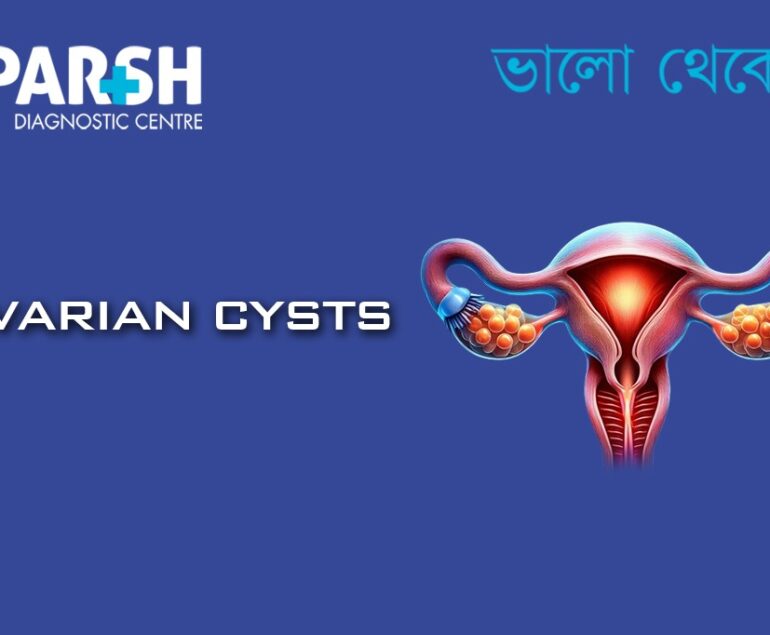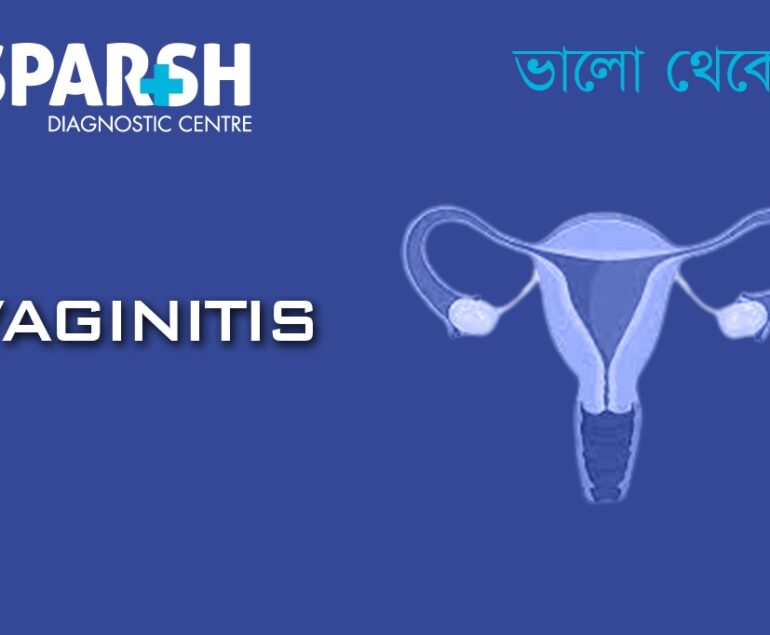Premenstrual Syndrome (PMS) is a common condition that affects millions of women worldwide during their reproductive years. It refers to a wide range of physical, emotional, and behavioral symptoms that typically occur one to two weeks before menstruation and subside once the menstrual period begins.
While some women experience mild discomfort, for others PMS can be severe enough to disrupt daily life, work, relationships, and overall well-being. Understanding PMS is crucial for timely diagnosis, lifestyle adjustments, and medical care when needed.
At Sparsh Diagnostic Centre, we provide comprehensive diagnostic services to help women identify underlying hormonal imbalances, nutritional deficiencies, and other health factors that may contribute to PMS symptoms.
What is Premenstrual Syndrome (PMS)?
PMS is a set of recurring symptoms linked to hormonal changes in the menstrual cycle. It typically appears in the luteal phase (the second half of the cycle, after ovulation) and resolves when menstruation begins.
Key facts about PMS:
Affects 3 out of 4 women of reproductive age.
Symptoms can range from mild to severe.
Severe cases may be diagnosed as Premenstrual Dysphoric Disorder (PMDD).
PMS is influenced by hormonal fluctuations, stress, diet, and lifestyle factors.
Symptoms of PMS
PMS symptoms are classified into physical and emotional/behavioral categories.
1. Physical Symptoms
Pelvic pain or cramps
Breast soreness or tenderness
2. Emotional & Behavioral Symptoms
Irritability and anger
Mood swings
Brain fog or trouble concentrating
Changes in sex drive
Increased or decreased appetite
These symptoms vary from woman to woman and may change in severity from month to month.

Causes of PMS
The exact cause of PMS is not fully understood, but several factors are believed to contribute:
Hormonal fluctuations – Shifts in estrogen and progesterone levels during the menstrual cycle affect mood and physical health.
Chemical changes in the brain – Neurotransmitters like serotonin play a role in mood regulation; low serotonin levels are linked with PMS.
Lifestyle factors – Stress, lack of exercise, poor sleep, and unhealthy diet can worsen symptoms.
Nutritional deficiencies – Low levels of magnesium, calcium, and vitamin B6 may contribute to PMS.
Underlying health conditions – Thyroid disorders, depression, or chronic stress can make PMS more severe.
Diagnosis of PMS
There is no single test for PMS. Diagnosis is usually based on tracking symptoms and ruling out other medical conditions.
At Sparsh Diagnostic Centre, diagnosis may include:
Medical history review – Understanding menstrual patterns and symptom severity.
Physical and pelvic examination – To rule out gynecological issues.
Blood tests – To check hormone levels, thyroid function, and deficiencies.
Symptom diary – Recording symptoms over at least two menstrual cycles.
Treatment and Management of PMS
Treatment depends on the severity of symptoms. Mild to moderate PMS can often be managed with lifestyle changes, while severe cases may require medical intervention.
1. Lifestyle Modifications
Balanced diet – Increase intake of whole grains, fruits, and vegetables. Reduce sugar, salt, caffeine, and alcohol.
Exercise – Regular physical activity improves mood and reduces bloating.
Adequate sleep – Helps with fatigue and emotional stability.
Stress management – Yoga, meditation, and breathing exercises can reduce irritability and anxiety.
2. Nutritional Supplements
Calcium and magnesium – Reduce fatigue and bloating.
Vitamin B6 – Helps regulate mood.
Omega-3 fatty acids – Improve emotional well-being.
3. Medications
Pain relievers (ibuprofen, naproxen) for cramps and headaches.
Oral contraceptives – To regulate hormone fluctuations.
Antidepressants (SSRIs) – For severe emotional symptoms or PMDD.
Diuretics – To reduce bloating and water retention.
4. Alternative Therapies
Acupuncture – May reduce pain and improve mood.
Herbal remedies – Chasteberry and evening primrose oil are sometimes used, but should be taken with medical advice.
When to See a Doctor?
Seek medical help if:
PMS symptoms interfere with work, studies, or relationships.
Pain and mood changes are severe and unmanageable.
Symptoms persist despite lifestyle changes.
There is suspicion of PMDD (a severe form of PMS).
At Sparsh Diagnostic Centre, women can consult gynecologists, undergo diagnostic tests, and receive tailored treatment plans to manage PMS effectively.
PMS vs PMDD (Premenstrual Dysphoric Disorder)
| Feature | PMS | PMDD |
|---|---|---|
| Severity | Mild to moderate | Severe and disabling |
| Frequency | Affects most women | Affects 3–8% of women |
| Symptoms | Physical and emotional discomfort | Severe depression, anxiety, and irritability |
| Treatment | Lifestyle changes, pain relief | SSRIs, hormone therapy, psychiatric care |
Preventing PMS Symptoms
While PMS cannot always be prevented, the following steps can minimize discomfort:
Maintain a healthy diet with complex carbs and lean proteins.
Stay hydrated and limit caffeine/alcohol.
Engage in regular exercise to balance hormones.
Practice stress-reducing techniques like yoga and meditation.
Track menstrual cycles to prepare for symptom onset.
Role of Sparsh Diagnostic Centre in PMS Care
At Sparsh Diagnostic Centre, women receive:
Comprehensive hormonal testing to identify imbalances.
Gynecological consultations for accurate diagnosis.
Nutritional guidance to manage diet-related PMS triggers.
Personalized treatment plans including lifestyle, medical, and alternative therapies.
Our state-of-the-art diagnostic facilities in Kolkata ensure accurate testing, timely diagnosis, and compassionate care for women’s health needs.
FAQs on PMS
1. How common is PMS?
PMS affects nearly 75% of menstruating women, though severity varies.
2. Is PMS the same as period pain?
No. PMS occurs before menstruation, while period pain happens during menstruation.
3. Can PMS affect fertility?
PMS itself does not affect fertility, but underlying hormonal imbalances linked with PMS may sometimes influence reproductive health.
4. What foods worsen PMS?
High-salt, high-sugar, and caffeinated foods may worsen bloating, mood swings, and irritability.
5. Can PMS be cured?
PMS cannot be completely cured, but lifestyle changes and medical treatment can effectively manage symptoms.
6. What is the difference between PMS and PMDD?
PMDD is a severe form of PMS with debilitating emotional symptoms like depression and anxiety.
7. Should I see a doctor for mild PMS?
Mild PMS can be managed at home, but if symptoms affect your daily life, it is best to consult a doctor.
Premenstrual Syndrome (PMS) is a natural but often disruptive condition that affects women before their menstrual periods. With the right lifestyle adjustments, medical support, and diagnostic care, PMS symptoms can be effectively managed.
At Sparsh Diagnostic Centre, we offer advanced diagnostic services and expert medical consultations to help women regain control over their health and improve quality of life.
#BhaloTheko
Disclaimer:
No content on this site, regardless of date, should ever be used as a substitute for direct medical advice from your doctor or other qualified clinician.

![]()






[…] symptoms of PMS in […]
[…] of reproductive age, often causing physical discomfort and mood changes before menstruation. While Premenstrual Syndrome (PMS) is well-known, a more severe form exists — Premenstrual Dysphoric Disorder (PMDD). PMDD affects […]